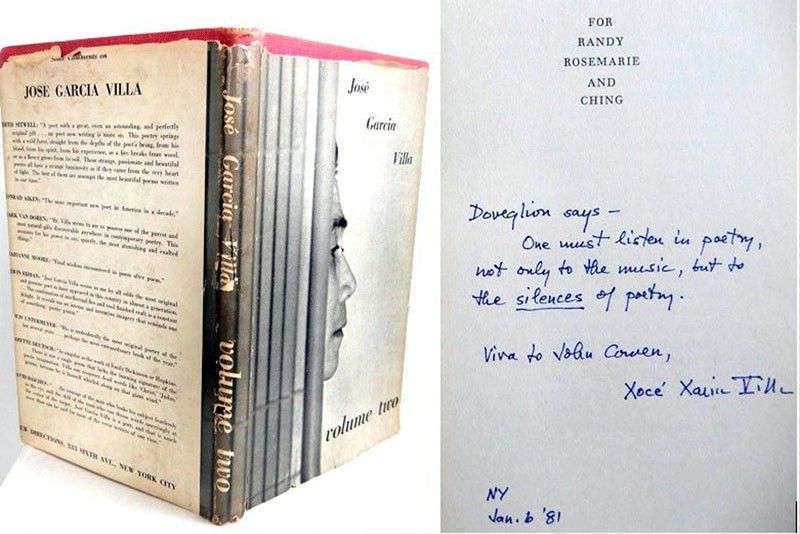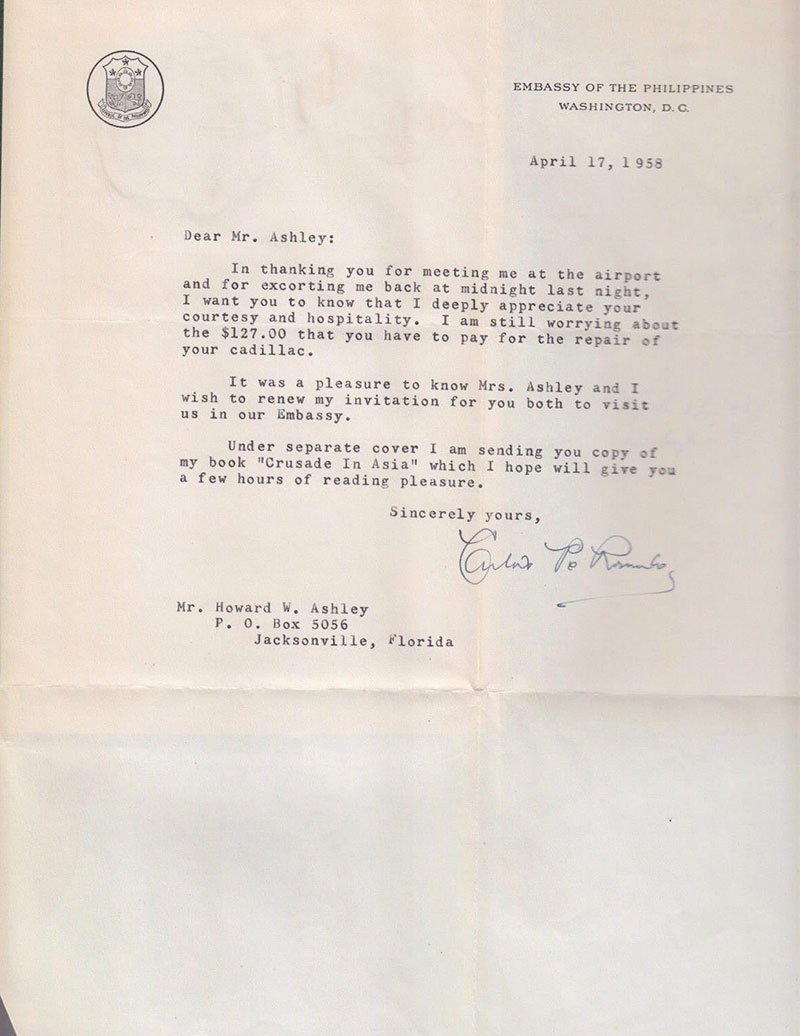More autographs and memories

Four years ago, I wrote a column-piece titled “Autographs and memories,” largely about a visit that Beng and I made to an exhibit of autographs at the National Archives in Washington, DC, where I ogled the signatures of such as Ezra Pound, Adolf Hitler, Albert Einstein, and a score of American presidents and notables. I wished loudly that we would have a similar exhibit curated and mounted, say, at the National Museum.
Having ventured into collecting mid-century genre paintings, I’m slowly building up a digital archive of artists’ signatures. Those of our National Artists are pretty well covered by numerous coffee table books (so well that I’m sure some enterprising souls have made an industry out of copying them), but I’m more interested in the less-known likes of Serafin Serna, Gabriel Custodio, Crispin V. Lopez, Ben Alano, Jose D. Castro, and Fortunato Jervoso, among others — painters born shortly after the turn of the century and who may have studied under Fernando Amorsolo, or been influenced by his style.
When it comes to literature, however, then I do feel happily obligated to collect works signed by our National Artists, and have shamelessly invoked the privilege of friendship to solicit signatures to go with the books of Virgilio Almario, Bien Lumbera, and F. Sionil Jose — and, when they were alive, NVM Gonzalez, Franz Arcellana, Edith Tiempo, and Nick Joaquin. I’ve just as assiduously sought out those of such estimable and historically important writers (apart from my close personal writer-friends) as Carlos Bulosan, Zoilo Galang, Bienvenido Santos, Aida Rivera Ford, Tita Lacambra Ayala, Greg Brillantes, and Resil Mojares. On my wish list remain the autographs of Manuel Arguilla and Stevan Javellana, ideally on their books — and dare I even add Jose Rizal?
I never was his student (although Jimmy Abad and Luigi Francia were, half a generation ahead of me), but I had always wished to meet Jose Garcia Villa. The closest I would get was a signed copy of his 1949 book, Volume Two, courtesy of eBay.
The Web may be the bane of many a bibliophile yearning for the tactile pleasures of typeset pages and deckled edges, but it also happens to be a nearly inexhaustible trove of hidden treasure, like the seabed where gold-laden galleons lie.

A letter from Carlos P. Romulo, 1958
It was where, a couple of weeks ago, I chanced upon a book inscribed by the late dramatist and poet and National Artist Rolando Tinio to a “Lito, Lito,” whom he gently urges to move away from English, like Tinio himself did. Tinio had directed one of my plays in the late 1970s, but I must have been so awestruck that I never got to ask him to sign anything, not even the playbill.
That reminded me of another departed National Artist I wouldn’t have been too shy to swipe a signature from — but also never did. Lino Brocka and I collaborated on about 14 movies, and I corresponded with him frequently, especially when I was sending him scripts and storylines from graduate school in the US in the late 1980s until he died in 1992. But I don’t recall that he was ever the writing kind. (Instead, unmindful of time zones, he’d call me at 3 in the morning.) For all the work we did together, I can’t locate a single note from Lino.
I did secure an autographed book and a note — neither of them meant for me — online, signed by another National Artist for Literature (yes, the one we very often forget about, perhaps because he distinguished himself in so many other fields): Carlos P. Romulo, who received that honor in 1982.
My only encounter with Gen. Romulo was through a speech of his that I memorized and declaimed in grade school — the one that describes Filipinos as “short sunburnt men who love to fling the salty net” (I must’ve flung that net a thousand times in my impassioned recitations) — but I knew him to be a personage so highly accomplished and acclaimed that one university wag would claim that CPR had “more degrees than a thermometer.”
The book, Crusade in Asia, was inscribed by CPR to a “Howard W. Ashley” of Jacksonville, Florida, and was accompanied by a typewritten and signed letter also dated April 17, 1958 on the letterhead of the Philippine Embassy in Washington, DC, where CPR was serving as ambassador between 1955 and 1962. In the note, Romulo thanks Ashley for meeting him at the airport at midnight — a gesture that had unintended consequences, as CPR writes that “I am still worrying about the $127.00 that you have to pay for the repair of your Cadillac.”
Speaking of CPR, by coincidence — the kind that antiquarian collectors tend to run into more often than others — I came across an article by E. R. Rodriguez Jr. in the Aug. 19, 1967 issue of The Chronicle Magazine. It details a mortifying exchange of long letters between a younger CPR and his boss, President Manuel L. Quezon, who delivers a stinging rebuke to his irrepressibly articulate aide for going on a private book tour while serving as a government official. That deserves its own column one of these days — but what I’d give for a signed original of what MLQ said!
* * *
Email me at jose@dalisay.ph. and visit my blog at www.penmanila.ph.


















